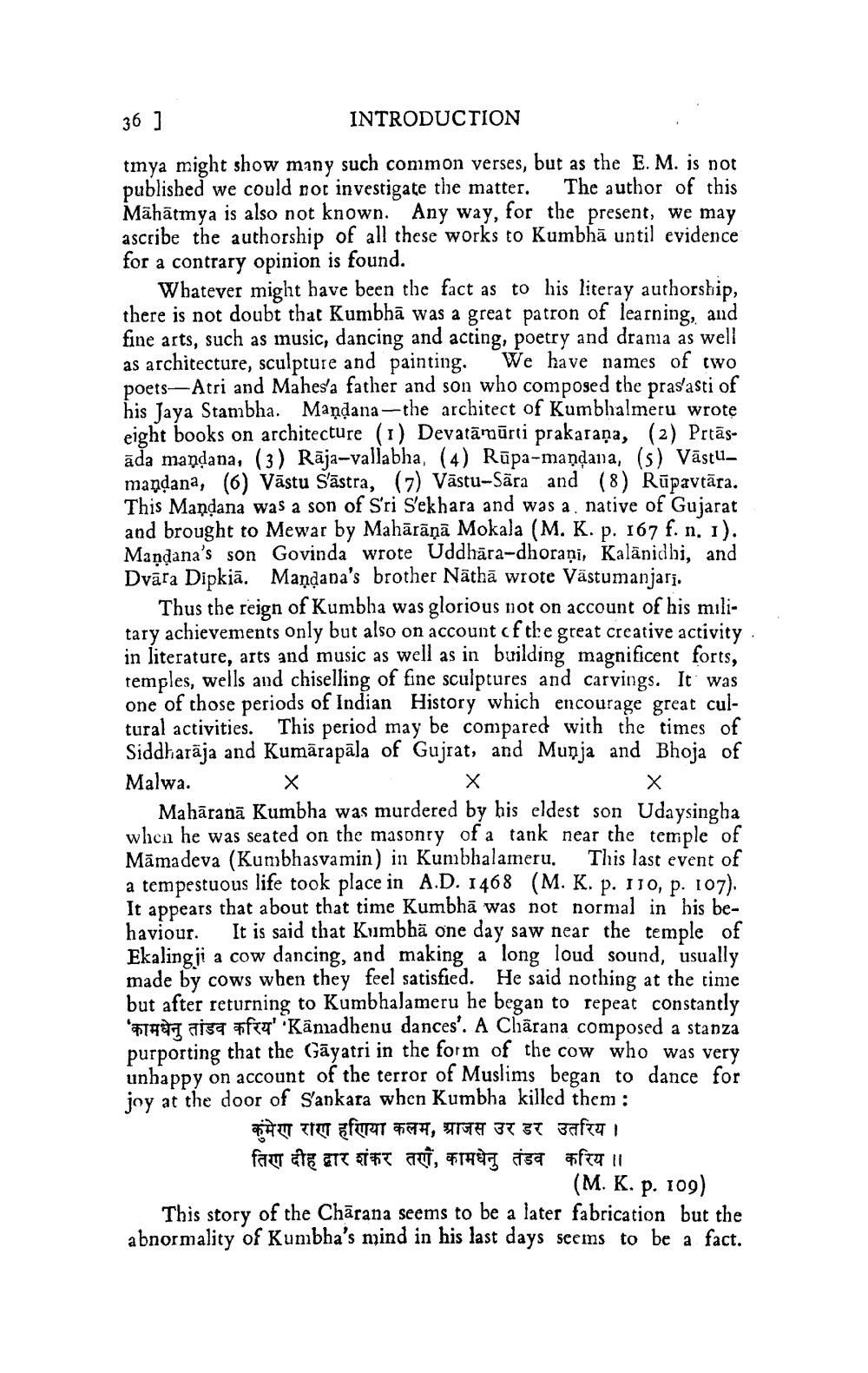________________
36 ]
INTRODUCTION tmya might show many such common verses, but as the E. M. is not published we could not investigate the matter. The author of this Māhātmya is also not known. Any way, for the present, we may ascribe the authorship of all these works to Kumbhā until evidence for a contrary opinion is found.
Whatever might have been the fact as to his literay authorship, there is not doubt that Kumbhā was a great patron of learning, and fine arts, such as music, dancing and acting, poetry and drama as well as architecture, sculpture and painting. We have names of (wo poets-Atri and Mahesa father and son who composed the pras'asti of his Jaya Stambha. Mandana--the architect of Kumbhalmeru wrote eight books on architecture (1) Devatāmūrti prakaraṇa, (2) Prtās. ada mandana, (3) Rāja-vallabha, (4) Rūpa-mandana, (s) Vāstu. maņdana, (6) Vāstu S'āstra, (7) Vāstu-Sāra and (8) Rūpavtāra. This Mandana was a son of Sri Slekhara and was a native of Gujarat and brought to Mewar by Mahārāņā Mokala (M. K. p. 167 f. n. I). Mandana's son Govinda wrote Uddhāra-dhoraņi, Kalanidhi, and Dvāra Dipkiā. Maņdana's brother Nāthā wrote Västumanjari.
Thus the reign of Kumbha was glorious not on account of his military achievements only but also on account of the great creative activity in literature, arts and music as well as in building magnificent forts, temples, wells and chiselling of fine sculptures and carvings. It was one of those periods of Indian History which encourage great cultural activities. This period may be compared with the times of Siddharāja and Kumārapāla of Gujrat, and Munja and Bhoja of Malwa. X
Mahāranā Kumbha was murdered by his eldest son Udaysingha when he was seated on the masonry of a tank near the temple of Māmadeva (Kumbhasvamin) in Kumbhalameru. This last event of a tempestuous life took place in A.D. 1468 (M. K. p. 110, p. 107). It appears that about that time Kumbhā was not normal in his behaviour. It is said that Kumbhā one day saw near the temple of Ekalingji a cow dancing, and making a long loud sound, usually made by cows when they feel satisfied. He said nothing at the time but after returning to Kumbhalameru he began to repeat constantly PT. aisa afxq' "Kamadhenu dances'. A Charana composed a stanza purporting that the Gāyatri in the form of the cow who was very unhappy on account of the terror of Muslims began to dance for joy at the door of Sankara when Kumbha killed them :
कुमेण राण हणिया कलम, आजस उर डर उतरिय । तिण दीह द्वार शंकर तण, कामधेनु तंडव करिय ।।
(M. K. p. 109) This story of the Chārana seems to be a later fabrication but the abnormality of Kumbha's mind in his last days seems to be a fact.




